 |
| The Independent Traveler's Newsletter PAGE FOUR |
 |
| The Independent Traveler's Newsletter PAGE FOUR |
| Abbeys and Monasteries continued
. . . |
|
|
Le Mont St-Michel was originally known as Mont Tombe and
located on the now famous island in La
Manche. Christianity spread to this region around the
fourth century, and by the mid-sixth century it had a strong presence
in the area. By that time, Mont Tombe was populated by religious
devotees: hermits ~ probably some Celtic monks. Benedictine monks
were installed at the Abbey in 966, and today Le Mont St-Michel is the
second most visited tourist attraction in France and a UNESCO World
Heritage site.
In Auxerre in Burgundy is the Abbaye St-Germain. The abbey has a rich history that began in the 5th century; the Bishop of Auxerre, Saint Germain, was honored by the Queen for converting France to Catholicism. As a result, she had a basilica built in his name. Later a college was founded, and construction and reconstruction of the monastery continued off and on from the 12th through the 19th centuries. Don't miss the 11th century (Carolingian era) French frescoes, one of which depicts the martyr, Saint Etienne, being stoned at the wall of Jerusalem.
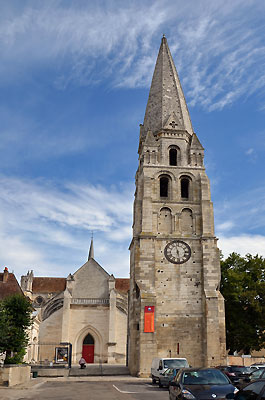 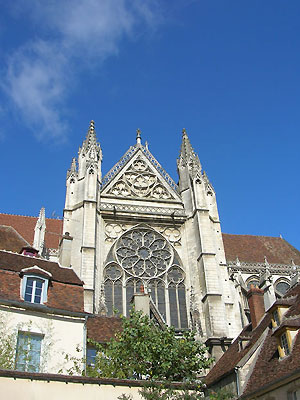 Abbey & Clock Tower and Notre Dame
d' Auxerre abbey church in beautiful Auxerre
Cistercians
Soon after
the death of his mother when he was 19 years old, Bernard of Clairvaux
decided to join the Cistercian Abbey at Cîteaux. His inspiration was to live his
life with purity in keeping with the monastic reform movement of the
time. In the preceding centuries, the prelates were not known for
being morally pure causing the Church to lose its credibility. He
believed that the Rule of Saint Benedict was not being adhered to in
proper fashion and that reform was needed to bring the monasteries back
to stricter adherence to their original values. He spread the
word throughout France, and promoted the growth of Cistercian abbeys
and monasteries. Bernard
was a very charismatic man who convinced almost everyone he knew to
join the monastery. Although he kept women out of the Cistercian
life, he placed love at the heart of his theology putting his
monasteries under the protection of Our Lady. Love of God and
love of the Church were the themes of his prolific writings, and he
believed that political and religious actions were joined as one,
obliging him to get involved in issues outside of monastic life.
He was even put in the position of deciding between two popes who had
been elected at the same time: Innocent II and Anacletus II. He
was asked to choose the one who was the most worthy, a task that took
him years of negotiations, and he selected Innocent II.
Senanque Abbey, Provence
At Abbaye de Fontenay, for example, you can visit the dormitory, the cloister, the abbey church and the forge. It is a World Heritage Site and has retained almost all of its original buildings built in the Romanesque and Early Gothic styles of architecture. Fontenay provides a unique picture of a Cistercian monastery and monastic life in the 12th century.
Bernard
strongly
opposed extravagant church decoration, writing, "The
walls of the church are ablaze with riches, while the poor go hungry;
its stones are covered in gold and its children go naked; the money for
feeding the poor is spent on embellishments to charm the eyes of the
rich;. . . " He despised gargoyles saying, "What
is the meaning [of] . . . these horrible beauties, the beautiful
horrors? ...If we are not ashamed of such frivolities, we should at
least regret what they cost!" Trappists The
Trappists took the reform movement of the Cistercians even further: in
1664 in Normandy they came together and called themselves the
Cistercians of the
Strict Observance. Although they do not take a vow of silence,
they speak only when absolutely necessary. Trappists
wear grey habits, distinguishing them from the other two.
They have monasteries
and convents around the world, and there are 29 in France ~ the
most well-known being the Abbey de Cîteaux in
Saint-Nicolas-les-Cîteaux (also known as Abbaye de Notre Dame de Cîteaux)
, once the Cistercian
monastery
of Bernard of Clairvaux and now Trappist. Visitors are welcomed
to stay as guests. Each Monday and Tuesday about 300 cheeses are
produced in the Abbey creamery ~ it is a semi-soft artisanal cheese
made from the milk of Montbéliarde cows that graze in the
surrounding meadow for about six months a year. The cheese is
sold primarily in the Abbey shop. 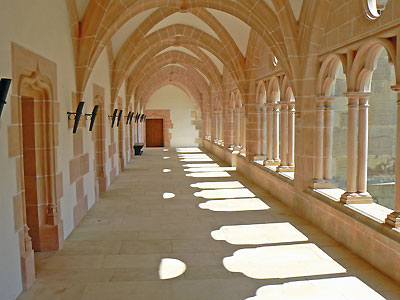 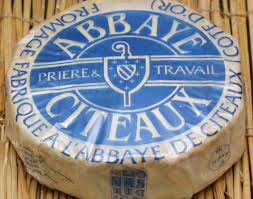
And, of course, there was the friar
(meaning 'brother' from the French word frère). As monks
withdrew from society, the friars, who took a vow of poverty and didn't
own property, relied on society for their survival. The mendicant
(begging) friars of the Middle Ages, the Dominicans and the
Franciscans, were established in 1216 and 1223 respectively, and
were seen as an instrument of the papacy. St Francis of Assisi is
the most well-known of the Franciscan friars. They were also educated,
spoke at public gatherings, and worked among the townspeople. The
third much larger order was the Jesuits who did not take a vow of
poverty and worked among the more influential people of society.
Today, some abbeys and convents from
the Middle Ages are still functioning. One very special one that
comes to mind is the Abbaye de Solesmes. A monumental structure, the
Abbey
has become world famous for its Gregorian chants. Chants
originated with the Romans and appealed to Gallican musicians who
transformed them, calling them Gregorien
chants. They were first taught by ear and committed to memory,
and the written text was used only to prompt for correct
performance. After losing popularity during the Middle Ages when
it was thought the changes were corrupted, along came the Renaissance,
and the music and vocals were 'corrected', resulting in what was
referred to as 'plainsong' ~ an even further corruption of the original
music. This lasted for about two hundred years, until 1833 when
a priest
from Le Mans, Dom Prosper Guéranger, undertook the task of
restoring Benedictine
musical life on the site of an old priory ~ in this lovely small
village of Solesmes. Listen here to
part of one chant from Solesmes.
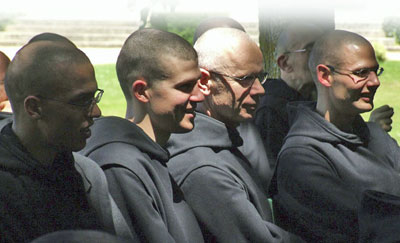 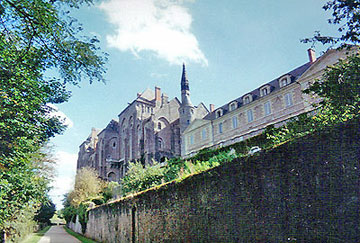 Benedictine Monks and the Abbaye de
Solesmes
. . . continued on page five |
|
 previous
page
next page previous
page
next page |